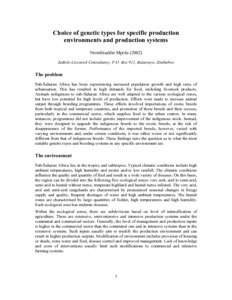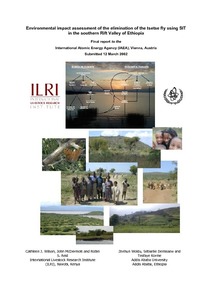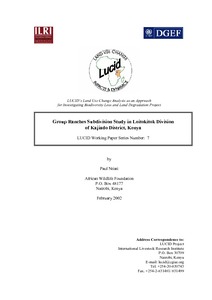Comparison of indigenous and foreign cattle for beef production at Matopos Research Station in Zimbabwe
Cattle breeds regarded as indigenous to Zimbabwe include the Mashona, Tuli and Nkone. History of the breeds, their development and promotion, and development of breed societies for each breed is described by Harvey (1987).
Competition and conflict between people and wildlife in S.E. Kajiado District, Kenya
Environmental impact assessment of the elimination of the tsetse fly using SIT in the southern Rift Valley of Ethiopia
Genetic improvement of indigenous cattle breeds in Zimbabwe: A case study of the Mashona Group Breeding Scheme
Genetically improved dual-purpose cowpea. Assessment of adoption and impact in the dry savannah of West Africa
The research reported here has the potential for contributing to a real improvement in the livelihoods of mixed crop-livestock farming households in the dry savannah zone of West Africa through widespread uptake of improved dual-purpose cowpea (IDPC).
Group ranches subdivision study in Loitokitok division of Kajiado District, Kenya
ILRI 2001 annual report. The poor and livestock mapping: Targeting research for development impact
Investing in animal health research to alleviate poverty
This presentation starts with a discussion on the need of this study and outlines its framework. It then assesses in detail how to attack poverty, and tries to answer the question where do livestock and their diseases fit in? Then it presents the study design and how it is achieved.
Land tenure reform and changes in land use and land management in semi-arid Tharaka, Kenya
Livestock - a pathway out of poverty. ILRI's strategy to 2010
This strategy modifies the 10-year plan first published in 2000. Its main focus is to ensure that ILRI's research is directed towards reducing poverty. Both the research and the evaluation of it have become more complex.












